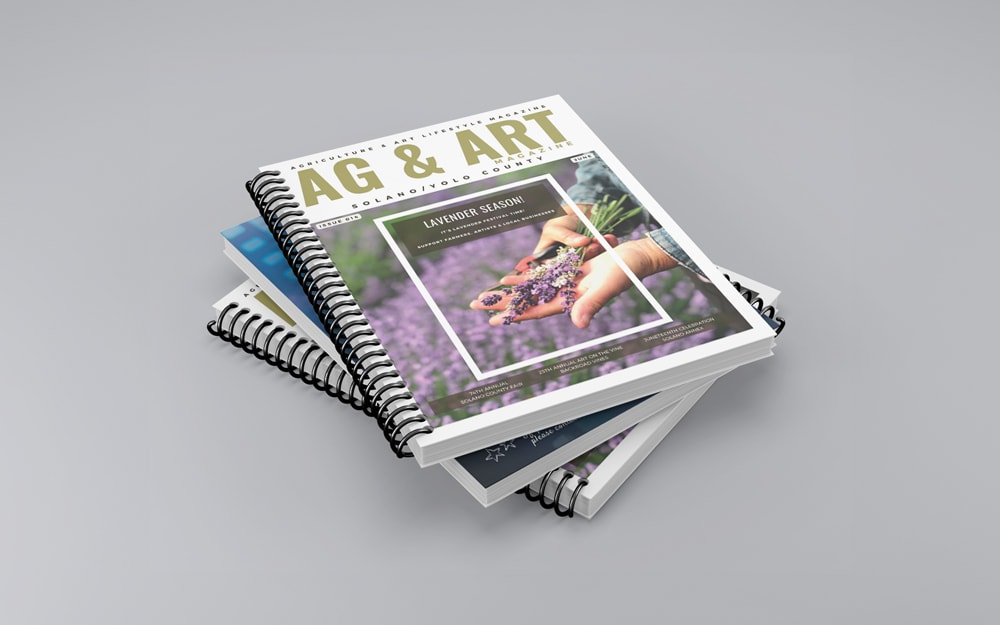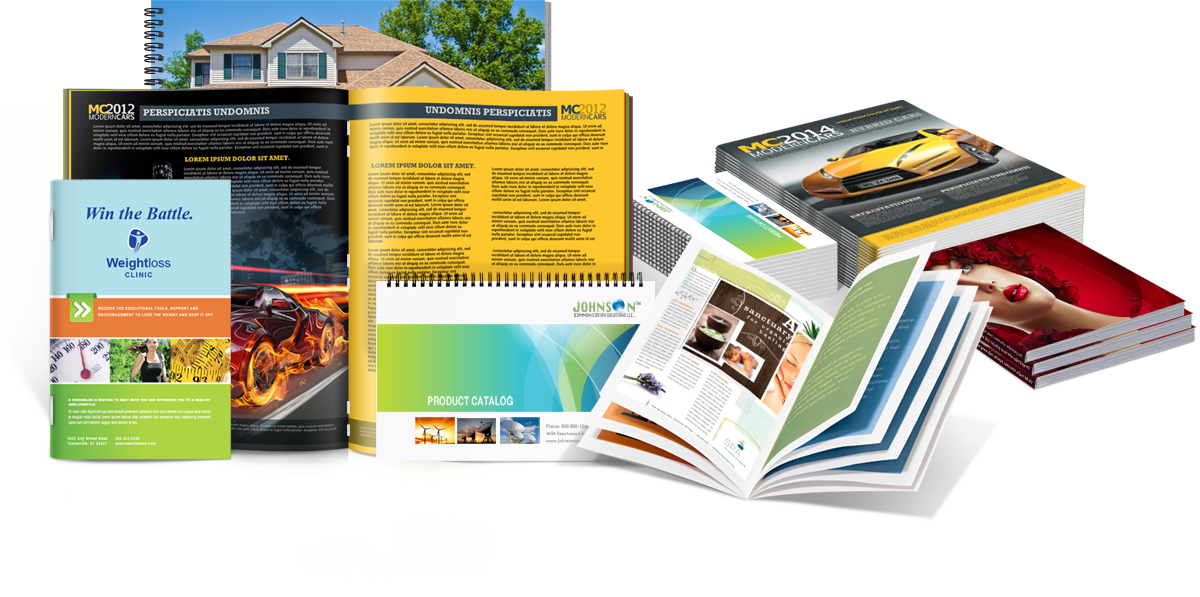How Eco-Conscious Brands Are Using Green Booklet Printing Methods
How Eco-Conscious Brands Are Using Green Booklet Printing Methods
Blog Article
The Crucial Overview to Comprehending Brochure Printing Options and Techniques
The process of booklet printing entails numerous factors to consider that can significantly impact the end product. From choosing the suitable format and dimension to comprehending the nuances of binding methods, each selection plays a necessary function. Additionally, factors such as paper supply and printing methods further affect the efficiency of the booklet. As one browses these choices, it becomes imperative to realize exactly how they adjoin and what that indicates for the overall end result.
Comprehending Booklet Dimensions and formats
When taking into consideration brochure printing, understanding the numerous formats and dimensions offered is essential for accomplishing the desired presentation. Booklets can be produced in many layouts, including saddle-stitched, spiral-bound, and perfect-bound, each offering distinctive advantages. Usual sizes vary from basic letter (8.5 x 11 inches) to smaller sized options like A5 (5.8 x 8.3 inches), permitting adaptability based on material and target audience.Selecting the appropriate size can affect both the layout and visitor involvement. Larger sizes could suit visually driven web content, while smaller formats might be extra portable and easy to use. Furthermore, the variety of web pages affects the option of binding approach, as thicker booklets may need tougher bindings. Ultimately, comprehending these elements permits for an extra tailored method, making certain that the final product straightens with the desired message and aesthetic, enhancing the overall efficiency of the interaction.
Picking the Right Paper Supply
Binding Approaches: Factors To Consider and alternatives
When it concerns binding techniques for pamphlets, several choices are readily available, each with distinct advantages. Saddle stitch binding uses a cost-effective option for thinner pamphlets, while perfect binding methods give a more sleek try to find thicker magazines. Wire-O binding stands apart for its resilience and simplicity of use, making it suitable for documents that call for flexibility.
Saddle Stitch Binding
Saddle stitch binding provides a cost-efficient and practical solution for putting together booklets, making it a prominent option among services and publishers. This binding technique includes folding sheets of paper in half and stapling them along the fold line, creating a neat and organized look. Commonly suitable for pamphlets with a reduced web page count, saddle stitching is ideal for magazines, brochures, and instructional products. The simpleness of this method enables quick production and is often preferred for advertising items or short runs. It is important to keep in mind that saddle stitch binding might not be appropriate for thicker booklets, as the back may not hold up under increased weight. On the whole, it stays a trustworthy choice for many printing tasks.
Perfect Binding Methods
Perfect binding is a widely utilized technique that gives a expert and polished surface to booklets and magazines. This method includes gluing the pages with each other at the spine making use of a strong adhesive, permitting a clean edge and the capacity to hold a larger variety of pages contrasted to saddle sewing. Perfect binding is especially ideal for thicker brochures, such as catalogs and yearly reports, where a strong, level spine is wanted. Additionally, it uses the alternative for a printed cover that can be made to enhance visual allure. Considerations such as page matter, paper weight, and the planned usage of the booklet must be taken right into account, as they can influence resilience and general top quality.
Wire-O Binding Alternatives
Wire-O binding, known for its sturdiness and versatility, supplies an excellent option for booklets that need simple page turning and a specialist look. This binding method employs a series of metal loops that hold web pages securely, allowing them to exist level when open. It is specifically suitable for presentations, manuals, and catalogs due to its durable nature. Wire-O binding is readily available in numerous colors and diameters, accommodating different web page matters and densities. Furthermore, it permits the inclusion of tabs and covers, boosting the brochure's overall aesthetic. Considerations for Wire-O binding consist of the choice of cable shade, the dimension of the loopholes, and the degree of customization desired, all of which can greatly affect the end product's look and capability.
Digital vs. Offset Printing: Which Is Best for You?
When picking a printing technique for booklets, comprehending the distinctions in between digital and offset printing is crucial. Digital printing utilizes modern technology to create top quality prints quickly and economically, making it suitable for brief runs or tasks requiring quick turn-around times. It permits modification, offering the ability to print on-demand with minimal waste.In contrast, counter printing is a standard method that succeeds in producing huge quantities with regular quality. It entails transferring ink from a plate to a rubber blanket, after that to the paper, which results in vivid colors and exact details. However, balance out printing commonly requires longer arrangement times and is more economical for bigger volumes.Ultimately, the choice in between electronic and offset printing depends upon task needs, budget, and preferred amount. For little, time-sensitive tasks, digital may be the most effective choice, while balanced out might be more suitable for larger, premium manufacturings.

Designing Your Brochure: Tips and Finest Practices
When creating a brochure, cautious attention to layout, font option, and shade use can considerably improve its effectiveness. A well-structured layout overviews the visitor's eye, while suitable typefaces guarantee readability and convey the wanted tone. Furthermore, efficient use shade can stimulate emotions and emphasize crucial info, making the overall layout a lot more impactful.
Choosing the Right Format
Just the original source how can one successfully choose the right design for a brochure? First, it is necessary to examine the booklet's objective and target market. A tidy, organized format enhances readability and involvement. Using a grid system can assist in lining up components constantly, creating an expert appearance. Furthermore, incorporating aesthetic hierarchy with differing sizes and positionings of images and message can direct the viewers's eye and emphasize crucial information. It is likewise essential to leave adequate white room, which prevents overcrowding and enables better emphasis. Ultimately, evaluating various formats through mock-ups can supply understanding into exactly how the layout carries out in real-world scenarios, making certain that the last product fulfills both aesthetic and practical demands.
Picking Ideal Fonts
An appropriate typeface can greatly enhance the general style of a brochure, matching the design and enhancing the web content's message. The option of typefaces need to consider readability, especially for body text, as it guarantees the information is available to all readers. Sans-serif fonts are frequently chosen for digital formats, while serif fonts can offer a typical feeling in published materials. It's recommended to limit font choices to 2 or 3 to preserve visual coherence. Additionally, typeface dimension plays an essential role; headings should be distinct yet Click Here not frustrating, while body message ought to be comfortable for analysis. When choosing font styles, positioning with the brochure's theme and target market is necessary for efficient communication and visual charm.
Effective Usage of Shade
Shade acts as an effective tool in pamphlet style, assisting and shaping understandings visitor feelings. It can stimulate sensations of peace, trust, or enjoyment, depending on the colors selected. Designers must consider color concept concepts, ensuring that the selected scheme lines up with the booklet's message and target audience. As an example, using warm shades like red and orange can develop urgency, while cooler tones like blue and eco-friendly foster tranquility.Additionally, comparison plays a vital role; complementary shades can improve readability and visual charm. Uniformity in shade use throughout web pages additionally reinforces brand name identification and communication. Inevitably, reliable shade execution not just catches focus yet additionally enhances the pamphlet's function, making it an essential aspect of successful layout.
Ending Up Touches: Coatings and Unique Results
While lots of take into consideration the web content and design of a brochure the most crucial elements, the finishing touches, such as coverings and special results, play a crucial duty in improving its general appeal. Coatings can provide defense and longevity, making sure that the brochure endures wear and tear. Matte coatings offer an advanced, non-reflective surface area, while glossy coatings can make colors show up even more dynamic and eye-catching. Unique effects, like embossing or aluminum foil marking, include a tactile measurement that can produce a memorable impact. These methods can highlight particular locations, drawing attention to crucial information or developing aesthetic interest. In addition, UV finish can provide a high-shine coating that raises the total look.Together, these completing touches not just improve the pamphlet's aesthetic yet also connect professionalism and trust and attention to detail, inevitably leaving a long lasting effect on the visitor.
Price Considerations for Brochure Printing
Recognizing the different price considerations for brochure printing is essential for companies and companies intending to optimize their budget plans. Secret variables influencing expenses consist of the selection of binding, paper, and ink methods. Higher high quality products, such as exceptional paper or specialized inks, generally boost the general expenditure. Additionally, the size and page count of the brochure play a substantial duty; bigger booklets require more resources and time to produce.Another crucial factor to consider is the printing strategy, whether electronic or countered, as each has its very own pricing structure and suitability for different quantities. Businesses ought to likewise factor in design expenses, which can vary based on intricacy and using specialist solutions. Inevitably, shipping and handling charges can contribute to the total amount, specifically for huge orders. By reviewing these components, companies can make enlightened choices that line up with their monetary abilities while accomplishing the preferred high quality in their printed materials.
Regularly Asked Inquiries
What Are the Ecological Effects of Booklet Printing?
The environmental impacts of pamphlet printing consist of logging from paper production, carbon emissions from transport, and waste generation from thrown out materials - Booklet Printing. Sustainable practices, such as making use of recycled paper and environment-friendly inks, can alleviate these impacts
How Can I Ensure Shade Accuracy in My Booklet?
To assure shade accuracy in a booklet, one need to use calibrated displays, utilize professional shade accounts, conduct examination prints, and choose top quality printing services that use color matching and proofing alternatives for finest results.
What Is the Regular Turnaround Time for Booklet Printing?
The normal turnaround time for pamphlet printing varies relying on the complexity and amount - Booklet Printing. Normally, it ranges from a couple of days to two weeks, affected by elements such as publishing methods and ending up demands
Exist Minimum Order Quantities for Booklet Printing?

Can I Publish Pamphlets in Numerous Languages?
Printing booklets in multiple languages is possible. Lots of printing solutions supply options for multilingual or bilingual designs, enabling reliable interaction. Mindful preparation guarantees that make components fit various languages without compromising readability or looks. In addition, variables such as paper supply and printing techniques further influence the effectiveness of the booklet. When considering booklet printing, understanding this article the various layouts and dimensions readily available is essential for attaining the wanted discussion. When picking a printing technique for brochures, comprehending the differences between electronic and offset printing is essential. Additionally, the dimension and web page count of the booklet play a substantial function; larger booklets require even more sources and time to produce.Another essential consideration is the printing strategy, whether electronic or balanced out, as each has its own rates framework and suitability for different amounts. The environmental impacts of pamphlet printing include deforestation from paper manufacturing, carbon discharges from transportation, and waste generation from thrown out materials.
Report this page